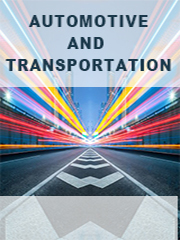Report overview
The Evaporative Emission Control (EVAP) System seals the fuel system of the vehicle to prevent fuel vapors from the fuel tank and fuel system from escaping into the atmosphere. This is important because fuel vapors contain a variety of hydrocarbons. Hydrocarbons form smog when they react with air and sunlight. Gasoline evaporates very quickly, so if the fuel system is open to the atmosphere a vehicle can pollute 24 hours per day without even being turned on. These uncontrolled evaporative emissions account for as much as 20% of the pollution produced by a vehicle.
This report aims to provide a comprehensive presentation of the global market for Automotive Evaporative Emission Control System, with both quantitative and qualitative analysis, to help readers develop business/growth strategies, assess the market competitive situation, analyze their position in the current marketplace, and make informed business decisions regarding Automotive Evaporative Emission Control System. This report contains market size and forecasts of Automotive Evaporative Emission Control System in global, including the following market information:
Global Automotive Evaporative Emission Control System Market Revenue, 2018-2023, 2024-2035, ($ millions)
Global Automotive Evaporative Emission Control System Market Sales, 2018-2023, 2024-2035, (K Units)
Global top five Automotive Evaporative Emission Control System companies in 2022 (%)
The global Automotive Evaporative Emission Control System market was valued at US$ million in 2022 and is projected to reach US$ million by 2035, at a CAGR of % during the forecast period. The influence of COVID-19 and the Russia-Ukraine War were considered while estimating market sizes.
The U.S. Market is Estimated at $ Million in 2022, While China is Forecast to Reach $ Million.
Fuel Tank Segment to Reach $ Million by 2035, with a % CAGR in next six years.
The global key manufacturers of Automotive Evaporative Emission Control System include SenTec Group, The Plastic Omnium Group, Delphi Technologies, TI Automotive, Plastic Fuel Systems, Didac International, Padmini VNA Mechatronics, Stant Corporation and Robert Bosch, etc. in 2022, the global top five players have a share approximately % in terms of revenue.
We surveyed the Automotive Evaporative Emission Control System manufacturers, suppliers, distributors and industry experts on this industry, involving the sales, revenue, demand, price change, product type, recent development and plan, industry trends, drivers, challenges, obstacles, and potential risks.
Total Market by Segment:
Global Automotive Evaporative Emission Control System Market, by Type, 2018-2023, 2024-2035 ($ Millions) & (K Units)
Global Automotive Evaporative Emission Control System Market Segment Percentages, by Type, 2022 (%)
Fuel Tank
EVAP Canister
Fuel Tank Pressure Sensor
Liquid-vapor Separator
Others
Global Automotive Evaporative Emission Control System Market, by Application, 2018-2023, 2024-2035 ($ Millions) & (K Units)
Global Automotive Evaporative Emission Control System Market Segment Percentages, by Application, 2022 (%)
OEM
Aftermarket
Global Automotive Evaporative Emission Control System Market, By Region and Country, 2018-2023, 2024-2035 ($ Millions) & (K Units)
Global Automotive Evaporative Emission Control System Market Segment Percentages, By Region and Country, 2022 (%)
North America
US
Canada
Mexico
Europe
Germany
France
U.K.
Italy
Russia
Nordic Countries
Benelux
Rest of Europe
Asia
China
Japan
South Korea
Southeast Asia
India
Rest of Asia
South America
Brazil
Argentina
Rest of South America
Middle East & Africa
Turkey
Israel
Saudi Arabia
UAE
Rest of Middle East & Africa
Competitor Analysis
The report also provides analysis of leading market participants including:
Key companies Automotive Evaporative Emission Control System revenues in global market, 2018-2023 (Estimated), ($ millions)
Key companies Automotive Evaporative Emission Control System revenues share in global market, 2022 (%)
Key companies Automotive Evaporative Emission Control System sales in global market, 2018-2023 (Estimated), (K Units)
Key companies Automotive Evaporative Emission Control System sales share in global market, 2022 (%)
Further, the report presents profiles of competitors in the market, key players include:
SenTec Group
The Plastic Omnium Group
Delphi Technologies
TI Automotive
Plastic Fuel Systems
Didac International
Padmini VNA Mechatronics
Stant Corporation
Robert Bosch
Okay Motor Products Hangzhou
Standard Motor Products
Outline of Major Chapters:
Chapter 1: Introduces the definition of Automotive Evaporative Emission Control System, market overview.
Chapter 2: Global Automotive Evaporative Emission Control System market size in revenue and volume.
Chapter 3: Detailed analysis of Automotive Evaporative Emission Control System manufacturers competitive landscape, price, sales and revenue market share, latest development plan, merger, and acquisition information, etc.
Chapter 4: Provides the analysis of various market segments by type, covering the market size and development potential of each market segment, to help readers find the blue ocean market in different market segments.
Chapter 5: Provides the analysis of various market segments by application, covering the market size and development potential of each market segment, to help readers find the blue ocean market in different downstream markets.
Chapter 6: Sales of Automotive Evaporative Emission Control System in regional level and country level. It provides a quantitative analysis of the market size and development potential of each region and its main countries and introduces the market development, future development prospects, market space of each country in the world.
Chapter 7: Provides profiles of key players, introducing the basic situation of the main companies in the market in detail, including product sales, revenue, price, gross margin, product introduction, recent development, etc.
Chapter 8: Global Automotive Evaporative Emission Control System capacity by region & country.
Chapter 9: Introduces the market dynamics, latest developments of the market, the driving factors and restrictive factors of the market, the challenges and risks faced by manufacturers in the industry, and the analysis of relevant policies in the industry.
Chapter 10: Analysis of industrial chain, including the upstream and downstream of the industry.
Chapter 11: The main points and conclusions of the report.
